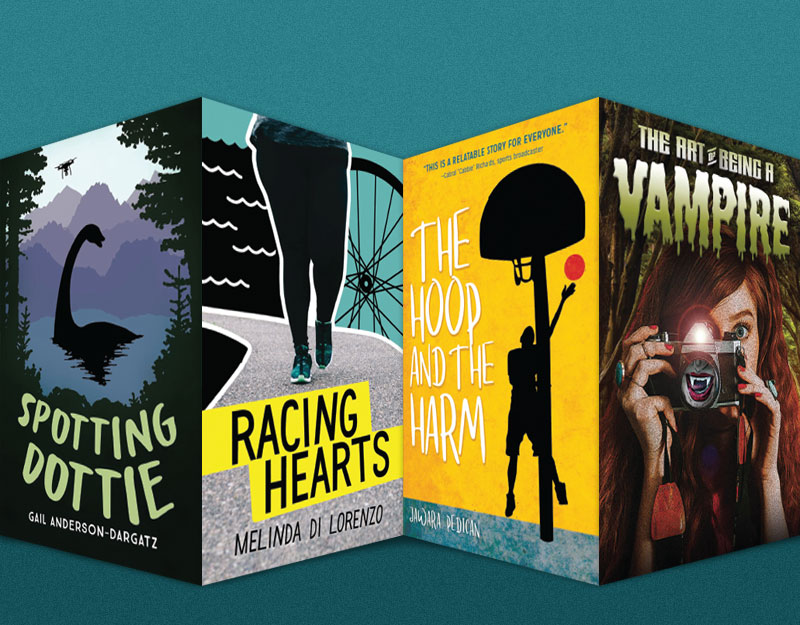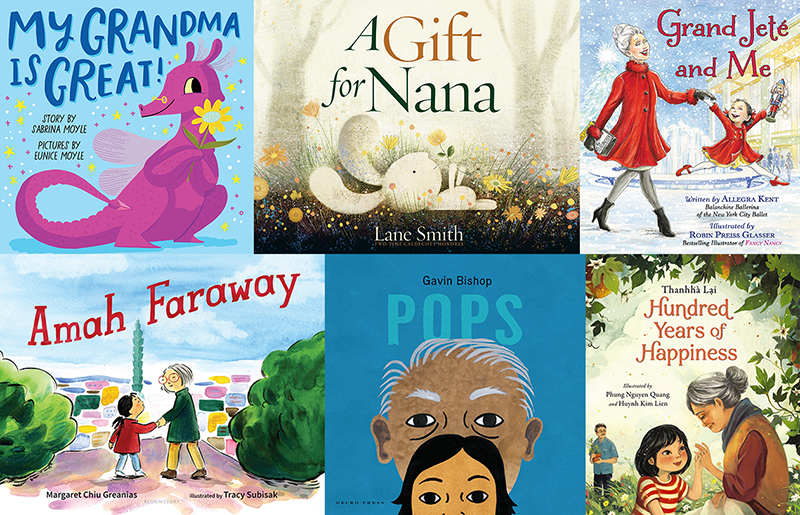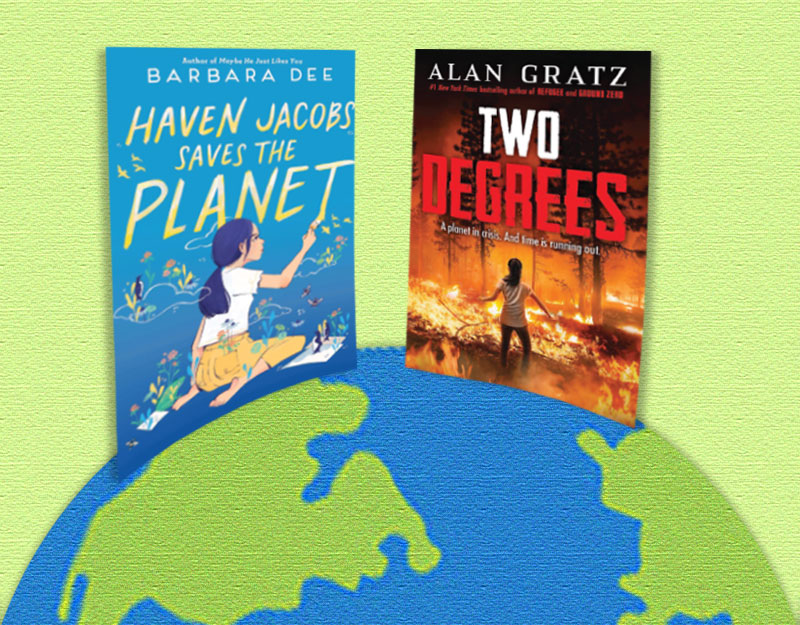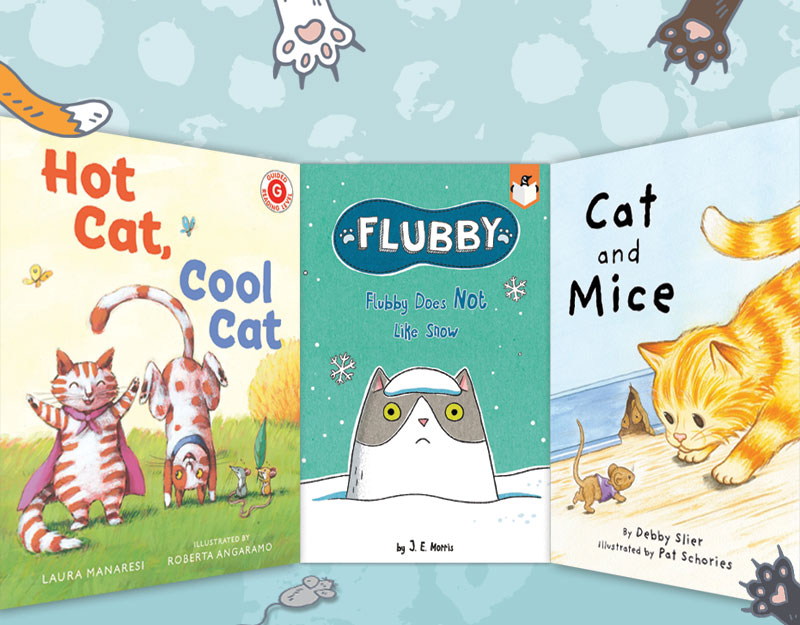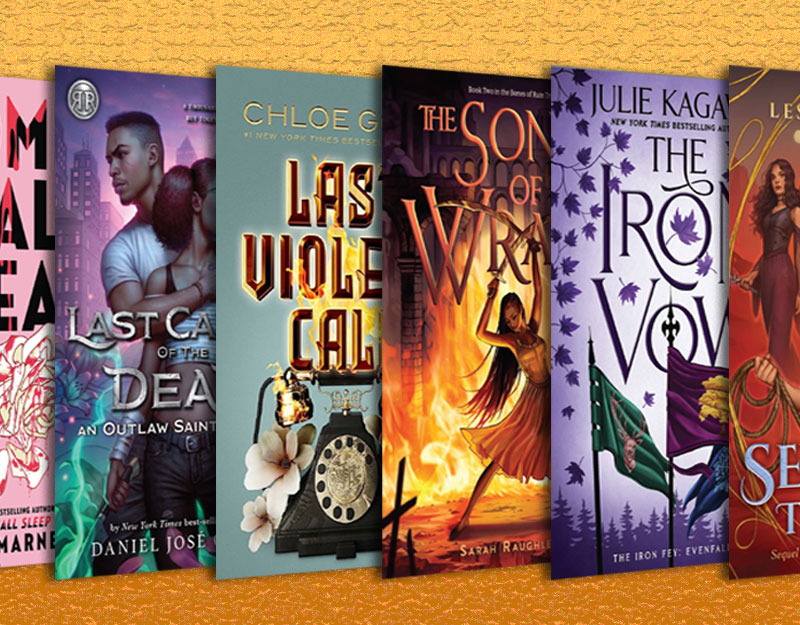Thank You, Earth
 Thank You, Earth: A Love Letter to Our Planet
Thank You, Earth: A Love Letter to Our Planet
Written and photographed by April Pulley Sayre
Published by Greenwillow Books, 2018
ISBN #978-0-06-269734-9
Grades K and up
Book Review
It’s not just the pretty parts of our planet, but the sometimes slimy, sometimes scary parts and the “pale in-betweens” that are treasured as well in this stunning picture book by celebrated author April Pulley Sayre. In Thank You, Earth: A Love Letter to Our Planet, Sayre employs her award-winning photography talents to showcase striking close-ups and sweeping landscapes of all that Earth has to offer. After establishing a direct, personal address to the world—“Dear Earth,”—each sentence begins with “Thank you for…” and continues with simple, soothing, hymn-like text, establishing a predictable structure for readers of all ages. At times, Sayre balances opposites and extremes in nature: “Thank you for curves and prickles.” Other times, she lands on the practical: “Thank you for leaves and stems and buds, for plant parts we can eat.” And still other times, she juxtaposes a straightforward sentence with a photograph that layers the statement with complexity, as when the words, “Even for those that sting” appear next to a photograph of bees pollinating a flower. Indeed, each image and each phrase pay homage to one of Earth’s myriad, interconnected wonders, no matter how large or small. Back matter includes an author’s note that offers multiple ways to say thank you to our planet. From a resource for Earth Day to a mentor text for writing letters and poetry, Thank You, Earth will provide your students with much to think and learn about, discuss, and act upon to celebrate the planet we call home.
Teaching Ideas and Invitations
Grades K and up
- Letter Writing. Similar to the previous activity, use Thank You, Earth as part of a broader unit on letter writing. Read aloud this book, as well as some others that feature different kinds of letter writing, such as The Day the Crayons Quit; The Day the Crayons Came Home; I Wanna Iguana; Same Sun Here; Click, Clack, Moo: Cows That Type; or even Postcards from Camp. You may want to use the Letter Writing Generators at ReadWriteThink.org that are listed in the Further Explorations section below. For older students, challenge their letter writing skills by teaching them how to use tone to achieve different moods in their letters. Refer to some of the books listed in the Further Explorations section below for more examples of letters that use a specific tone to create certain moods.
- Love Letters. As an extension to the previous activity, what makes Thank You, Earth a love letter, as the subtitle states? What elements of letter writing and what expressions of love are evident in the text? How does April Pulley Sayre blend multiple genres and purposes to achieve her goal as a writer? Use these questions to guide students in an exploration of what it means to write a love letter.
- Expounding Reasons to Thank the Earth. April Pulley Sayre is thorough in stating what about our planet she is thankful for, but she leaves it to the reader to infer the complete reasons why. Have students or small groups each select one of the things listed in the book and then research its role on our planet. What does it contribute to its immediate environment and ecosystem? How does it benefit the earth overall? Encourage students to share their research in the mode that best showcases their findings: a traditional research paper, an op-ed piece, a song, a video, etc.
- Reader’s Theater. The book’s simple, straightforward text makes it favorable for reader’s theater activities. Sayre’s use of different punctuation marks and sentence variety makes determining how each line should be read a worthwhile exercise for students as they prepare their reader’s theater performance. Have your students practice reading the text aloud in small groups and then perform a reader’s theater version of it in different voices and with different intonation to hear all the ways it can be read aloud fluently.
- Photographs as Illustration. April Pulley Sayre uses photography as the mode of illustration for her written text. As in all well illustrated picture books, the photographs don’t just accompany the text; they enhance, extend, or even contradict or subvert the text so their presence is a valuable part of the overall reading experience. What role(s) do the photographs in Thank You, Earth play? How does the layout and placement of each photograph work in relation to the layout and placement of the text? To help students explore these questions, share some of the other books we’ve blogged about that use photographs as illustrations: Hatching Chicks in Room 6, Can We Help?: Kids Volunteering to Help Their Community, It’s Our Garden: From Seeds to Harvest in a School Garden, Handle with Care: An Unusual Butterfly Journey, Rah, Rah Radishes! A Vegetable Chant, Kakapo Rescue: Saving the World’s Strangest Parrot, and Raindrops Roll.
- Thanking and Celebrating the Earth Throughout the Year. While celebrating Earth Day is a worthy endeavor, there are a number of opportunities throughout the year to continue celebrating, thanking, and protecting our planet. A number of cultures and communities across the world have long established traditions for thanking and celebrating our planet. Some celebrate the start of a certain season, such as the arrival of spring. Others celebrate the autumn harvest or the end of a stormy period. Additionally, other holidays have been named to raise awareness of and celebrate particular aspects of our world, as explained in this article. Have students research some of these traditions and holidays and present them to the class. Encourage the class to organize a celebration in addition to Earth Day based on what they and their classmates present.
- Text Sets the Celebrate Earth. With the help of your school or local librarian or bookseller, gather a collection of picture books that celebrate the earth. Read through these titles with students, comparing and contrasting information, perspective, and author’s purpose. For example, you might construct a duet model text set with The Great Big Green, by Peggy Gifford, and Thank You, Earth. Ask students to compare and contrast the language that each author employs and then consider how that affects the overall tone and message of the book. Or pair Thank You, Earth with Living Sunlight, by Molly Bang and Penny Chisholm, which about the interconnection between plants and animals and the role of photosynthesis in all life on earth. Ask students to use Living Sunlight to expand upon the statements in Thank You, Earth. You might also ask students to search for additional books about the earth that they love and to create text sets of their own to celebrate the earth.
- What Makes a Good Thank You? Reread Thank You, Earth with students with a lens of inquiry about the qualities for a good “thank you.” What does April Pulley Sayre do with language and images to make sure her expression of gratitude comes across as sincere and authentic? What might make for a superficial or inauthentic “thank you”? Encourage students to think about factors such as context, audience, language, and format. Then, have students identify someone or something they are thankful for and write a thank you note or letter that reflects the good qualities they identified. You might want to share Todd Parr’s The Thankful Book or Mo Willems’ The Thank You Book as other mentor text to analyze for this activity.
- Activities in the Book. The back matter contains several suggestions for actions and activities students can undertake to continue to thank the earth. Discuss each suggestion with your students and how plausible it might be to pursue it. If it seems to be a good match for your students, support their efforts to follow through on the activity.
- April Pulley Sayre Author Study. Gather a collection of April Pulley Sayre’s work and biographical information, including interviews and videos. As a class, read through the picture books she wrote, noting similarities and differences across the books’ formats and styles. Pay special attention to her use of language, images, and, perspectives, and characters. Ask your students to identify patterns in topic and theme across the books. Based on students’ inquiries, observations, and analyses, compile a list of lessons about writing gained from this study and invite your students to try out some of the techniques you have discussed in their own work. See the websites and titles listed below as a starting point for gathering information.
Further Explorations
Online Resources
April Pulley Sayre’s website
Earth Day Network
Ways to Celebrate Earth Day
https://www.globalcitizen.org/en/content/8-ways-to-celebrate-earth-day/
http://www.scholastic.com/parents/resources/article/parent-child/6-ways-to-celebrate-earth-day
https://www.thoughtco.com/how-to-celebrate-earth-day-606778
Earth Facts and Resources
https://solarsystem.nasa.gov/planets/earth/overview/
https://www.nationalgeographic.com/science/space/solar-system/earth/
http://nineplanets.org/earth.html
https://www.nytimes.com/topic/subject/earth
https://www.earthmagazine.org/
NASA Visible Earth
Google Earth
Books
Ancona, G. (2013). It’s our garden: From seeds to harvest in a school garden. Candlewick Press.
Ancona, G. (2015). Can we help? Kids volunteering to help their communities. Candlewick Press.
Arnold, C. (2017). Hatching chicks in room 6. Charlesbridge.
Burns, L. G. (2015). Handle with care: An unusual butterfly journey. Photographs by E. Harasimowicz. Millbrook Press.
Gifford, P. (2014). The great big green. Ill. by L. Desimini. Boyds Mills Press.
McDonald, R., & McDonald, J. (2016). I am Earth. House of Lore.
Montgomery, S. (2010). Kakapo rescue: Saving the world’s strangest parrot. Photographs by N, Bishop. Houghton Mifflin.
Parr, T. (2010). The Earth book. Little, Brown Books for Readers.
Parr, T. (2012). The thankful book. Little, Brown Books for Readers.
Sayre, A. P. (2011). Rah, rah, radishes! A vegetable chant. Beach Lane Books.
Willems, M. (2016). The thank you book. Hyperion.
Filed under: Nonfiction, Nonfiction Picture Books
About Grace Enriquez
Grace is an associate professor of language and literacy at Lesley University. A former English Language Arts teacher, reading specialist, and literacy consultant, she teaches and writes about children’s literature, critical literacies, and literacies and embodiment. Grace is co-author of The Reading Turn-Around and co-editor of Literacies, Learning, and the Body.
ADVERTISEMENT
ADVERTISEMENT
SLJ Blog Network
Zachariah OHora on PBS
Cover Reveal and Q&A: Dusti Bowling’s Latest – The Beat I Drum (Apr 2025)
Girlmode | Review
The Seven Bills That Will Safeguard the Future of School Librarianship
Read Rec Rachel: New YA Releases for November and December 2024
Gayle Forman Visits The Yarn!
ADVERTISEMENT


